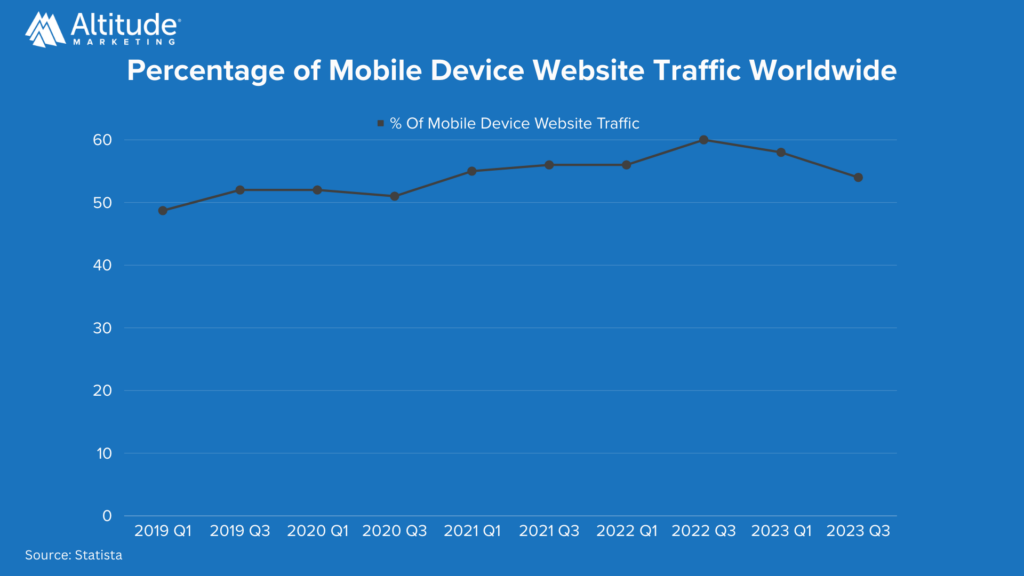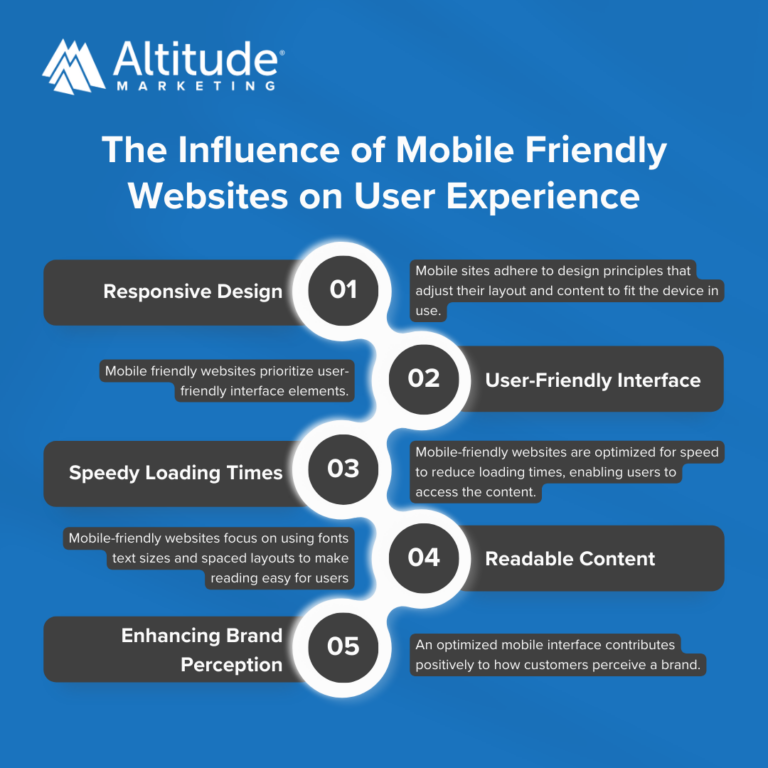Based on current browsing statistics, you are far more likely to be reading this on your phone than a computer. Despite that, it was still written, built, and launched from a desktop.
This is a paradox often overlooked by marketers or companies not settled in a digital-first mindset. It’s easy to publish a post that looks fantastic on your large deskbound screen–only to forget that it won’t load properly on a smaller phone.
We often see this in niche B2B life sciences companies. After all, you are busy developing the next breakthrough. A mobile-first website is easy to overlook. But it’s a critical mistake that isn’t just creating user frustration; it could also harm your SEO.
Here, we discuss why mobile-friendly websites are a must for life sciences companies and offer tips on how to improve yours.

The Importance of Mobile UX
The Surge of Mobile Devices in Web Traffic
In recent years, mobile devices have become the gateway to internet access for a significant portion of users worldwide. Statista reports that over half of global website traffic now originates from mobile. This trend underscores the imperative for life sciences companies to prioritize optimization as a means to effectively reach their target audience.

The Essentials of Mobile Design

A user-friendly website optimized for mobile not only adapts smoothly to screen dimensions but also enhances overall accessibility and convenience.
It also offers navigation, fast loading times, and clear content readability. Let’s dig into how mobile-friendly websites improve the user experience.
Responsive Design
Mobile sites adhere to design principles that adjust their layout and content to fit the device in use. This ensures a smooth experience for users on smartphones, tablets, and computers alike.
User-Friendly Interface
Mobile-friendly websites prioritize user-friendly interface elements. Every design element, from menus to buttons, is aimed at enhancing user interaction. This means buttons and behaviors that work just as smoothly with a finger as a mouse.
Speedy Loading Times
Mobile users expect access to information quickly. But often, they aren’t tethered to robust wifi. That means your site needs to prioritize speed to reduce loading times, enabling users to access the content. Research shows that more than half of site visits are abandoned if a page takes more than 3 seconds to load, highlighting the importance of speed in retaining user engagement.
Readable Content
Due to limited screen space on devices, ensuring content readability is crucial. Mobile-friendly websites focus on using fonts text sizes and spaced layouts to make reading easy for users without requiring excessive zooming or scrolling.
Enhancing Brand Perception
An optimized mobile interface contributes positively to how customers perceive a brand.
As per Google’s findings, 57% of users may not recommend a company that has a poorly designed mobile site. Ensuring a smooth user experience can enhance brand trust and customer loyalty leading to increased engagement and conversions.
Significance of Mobile Accessibility and Impact
The significance of devices in terms of accessibility and reach should not be underestimated. 60% of searches on Google are now carried out on mobile devices. This highlights the need for life sciences companies to enhance their content for platforms to effectively connect with and captivate their target audience.
Enhanced User Engagement
One notable advantage of optimizing for mobile is its ability to enrich user engagement. The use of design and user-friendly interfaces is crucial in achieving this goal. Furthermore, statistics reveal that 74% of mobile users are more likely to return to mobile-friendly websites. This emphasizes the importance of user navigation and efficient content delivery.

Improving Search Engine Visibility
Optimizing for mobile also offers advantages in terms of search engine optimization (SEO).
Google exclusively indexes the mobile version of websites. This means a poorly constructed one will rank lower than its faster, more useful counterparts.
Mobile-friendly websites show a decrease in bounce rates compared to non-mobile-friendly ones. The reduction in bounce rates coupled with increased visibility contributes to conversion rates. This amplifies the impact of improvements on business expansion.
Strategies for Execution
Implementing mobile optimization strategies necessitates planning and implementation. Websites should adhere to design principles that emphasize content and functionality for users. Furthermore, thorough testing and optimization for devices and screen sizes are essential to ensure a top-notch user experience, across all platforms.
Future Outlook and Key Considerations
Considering the advancements in technology user behaviors will continue to shape the marketing landscape in life sciences. The integration of emerging technologies such as augmented reality (AR) and virtual reality (VR) presents opportunities for progress in marketing. Ongoing adaptation and creativity will be essential for keeping up with trends and maintaining an edge in the industry.
FAQs
Why is optimizing content important for businesses in the life sciences sector?
Mobile optimization is crucial for life sciences companies because it caters to the requirements of healthcare professionals and patients who depend on mobile devices for research, information, and decision-making in the constantly changing healthcare landscape.
How can we maintain compliance and security while optimizing for devices?
To ensure compliance and security during optimization, implement secure protocols, follow regulatory standards like HIPAA, and collaborate with IT and compliance teams to uphold data integrity and patient confidentiality.
What indicators should we monitor to assess the success of our mobile optimization endeavors?
To gauge the effectiveness of mobile optimization efforts monitor performance indicators (KPIs) such as traffic share, bounce rates, average session duration, and conversion rates. Use analytics tools for monitoring and analysis to optimize your strategy efficiently.
Conclusion
The world has moved to mobile, which means your marketing and design efforts need to follow. Through this optimization, companies can enhance user engagement, improve their SEO ranking and adapt to changing consumer behaviors.



